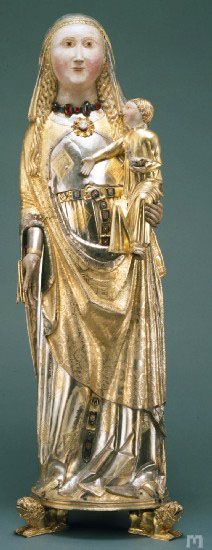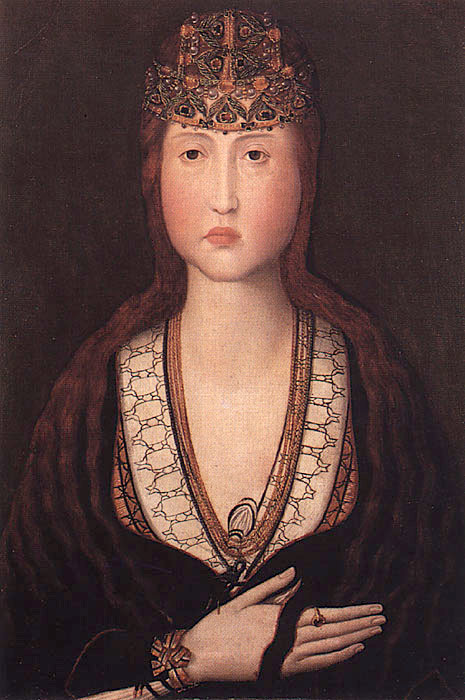Gothic is the name of the art style that appeared in the 12th century in Northern France, spread all over Central and Western Europe and lasted until the 16th century. One of the main characteristics of the Gothic style are the stone roofs with ribbed, crossed vaultings supported by flying butresses, which distributed better the weight of the roofs and allowed the walls of the buildings to be thinner and carry large windows. Gothic churches are generally much higher than Romanesque ones (vertical tendency instead of horizontal), while the large Gothic windows allow much more light to get inside, contrasting with the little light that could enter the narrow openings of Romanesque churches. Another typical characteristic of Gothic is the almost exclusive use of the pointed arch, instead of the perfect round arch of Romanesque or the horseshoe arch of Pre-romanesque. Gothic windows often had panels of coloured glass panels depicting Biblical and other stories, as well as more abstract motifs (surviving glass panels are very rare in Portugal).
Monastic beginings: In Portugal, Gothic appeared towards the end of the 12th century and substituted the Romanesque style slowly. Churches from this early phase show a mix of Romanesque and Gothic elements. Of great importance in the spreading of the Gothic style were the religious monastic orders of the Cistercians (Alcoba�a) and, specially, the mendicant orders of Franciscans and Dominicans, which dotted Portuguese cities with monasteries in a clean, simple Gothic style called the mendicant (mendicante) style. Late Gothic forms in use in other parts of Europe were introduced in the early 15th century with the construction of the Monastery of Batalha. The beginning of the 16th century saw the arrival of Manueline, a Portuguese style that fused late Gothic and early Renaissance. Only by the middle of the 16th century was Gothic/Manueline totally replaced by the Renaissance style.

Machado de Castro Museum, Coimbra
Image: Instituto Portugues de Museus
Although surviving paintings from this period are exceedingly rare, some examples of the second half of the 15th century are outstanding. The main painting school of the period is that of Nuno Gon�alves, court painter of Afonso V. The main work atributted to him is the Polyptich of Saint Vicent (Poliptico de Sao Vicente), a monumental series of six panels showing various representatives of the Portuguese society of the 1470's. The panels were originally in Lisbon Cathedral, were then transferred to the Monastery of Saint Vicent in the same city and are now at the National Museum of Ancient Art in Lisbon.

Index